Papyrus Museum. The sixth part of the series on special Viennese museums takes us to the land of the pharaohs. Using original papyri as well as antique textiles and everyday objects, the visitor to the Papyrus Museum gets a vivid impression of life and culture in ancient and early medieval Egypt.
PapyrusmuseumIn das Land der Pharaonen entführt der sechste Teil der Reihe über Wiener Spezialmuseen. Anhand originaler Papyri sowie antiker Textilien und Alltagsgegenstände erhält der Besucher im Papyrusmuseum einen lebendigen Eindruck vom Leben und der Kultur im antiken und frühmittelalterlichen Ägypten.
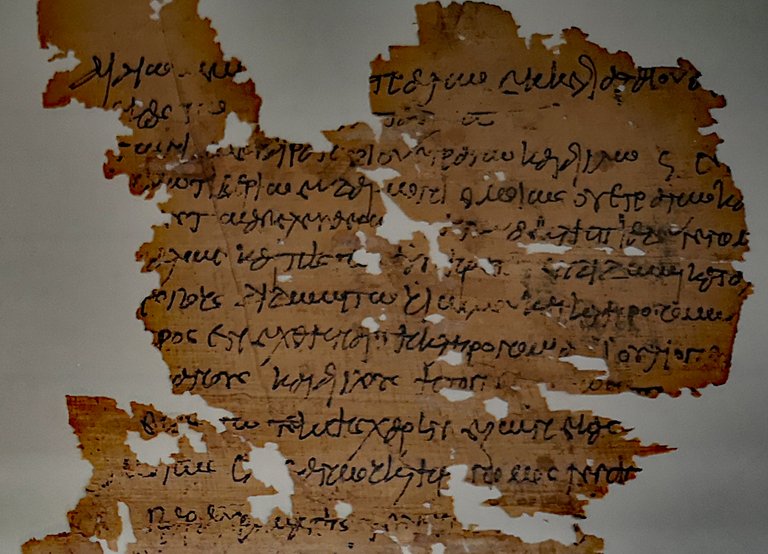
The Austrian National Library owns worldwide one of the most extensive and important collections of ancient documents, with some 180,000 objects. A representative selection is shown in the Papyrus Museum, which is housed in the basement of the Neue Burg on Heldenplatz.
Die österreichische Nationalbibliothek besitzt mit rund 180.000 Objekten eine der umfangreichsten und bedeutendsten Sammlungen antiker Schriftstücke weltweit. Eine repräsentative Auswahl zeigt das Papyrusmuseum, das im Untergeschoß der Neuen Burg am Heldenplatz untergebracht ist.
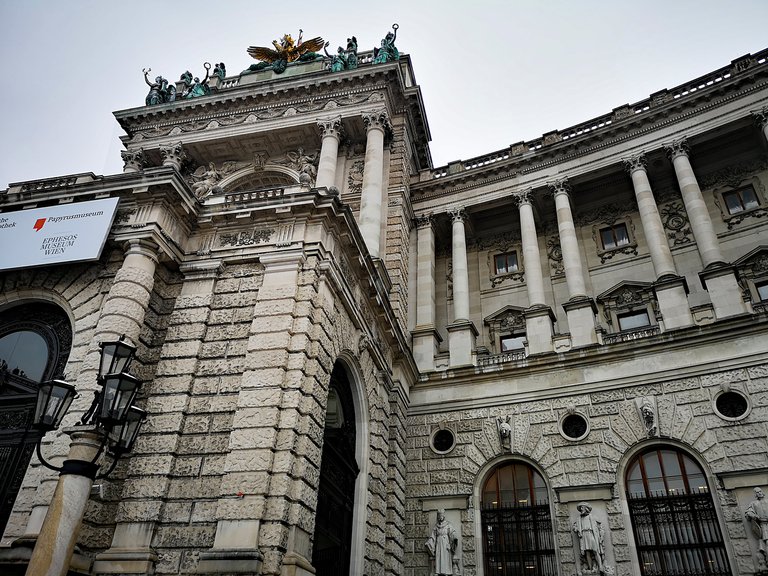
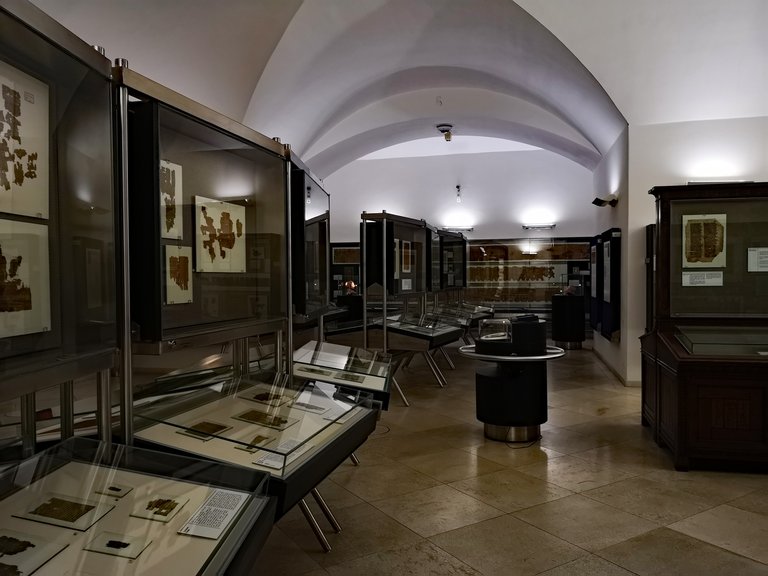
Nearly all stocks come from Egypt, where papyrus has been preserved for thousands of years due to the hot, dry climate. The collection comprises documents from a period of around 3,000 years, starting from the 15th century BC. The main focus is on documentary texts from Late Antiquity (4th-7th century AD).
Nahezu alle Bestände stammen aus Ägypten, wo Papyrus aufgrund des heißen, trockenen Klimas über Jahrtausende erhalten blieb. Die Sammlung umfasst Schriftstücke aus einem Zeitraum von rund 3.000 Jahren, beginnend ab dem 15. Jh. v. Chr. Den Schwerpunkt bilden dokumentarische Texte aus der Spätantike (4.-7. Jh. n. Chr.).
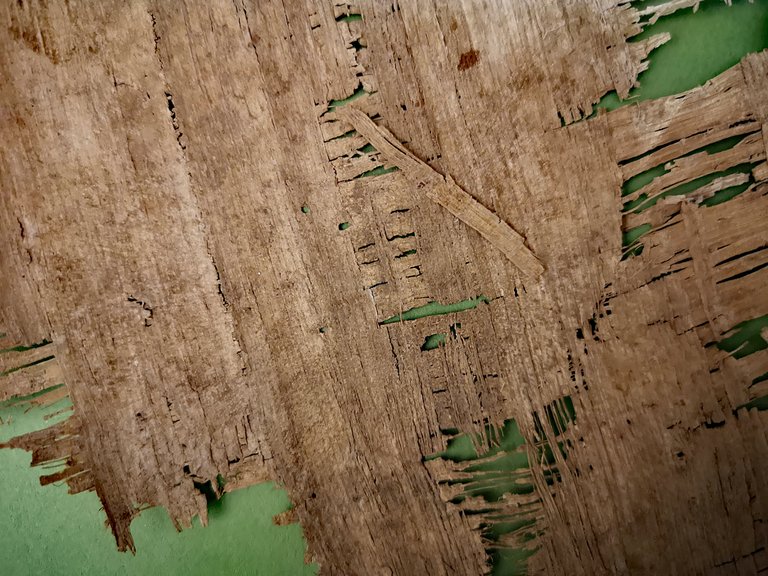
The technique of papyrus production was evolved in Egypt around 3000 BC. The triangular stems of the papyrus plant are first skinned, cut into thin strips and soaked in water. Then the strips are beaten soft until they are almost transparent. Now the strips are placed in two layers (90° to each other), like the pattern of a chessboard. After this procedure the material is covered with a cloth and pressed. The released plant sap, which functions like an adhesive, form the strips to a firm sheet, which can be written on after drying.
Die Technik der Papyrus-Herstellung wurde ungefähr 3000 Jahre v. Chr. in Ägypten entwickelt. Die dreieckigen Stängel der Papyruspflanze werden zunächst gehäutet und in dünne Streifen geschnitten. Die Stücke werden zum Aufweichen in ein Wasserbad gelegt und anschließend so lange weichgeklopft, bis ein fast durchsichtiges Material entsteht. Die Streifen werden dann in zwei Schichten 90° zueinander, dem Muster eines Schachbrettes gleich, übereinandergelegt, mit einem Tuch abgedeckt und gepresst. Der freigesetzte Pflanzensaft wirkt wie ein Kleber, wodurch sich die einzelnen Streifen zu einem festen Blatt verbinden, das nach dem Trocknen beschrieben werden kann.
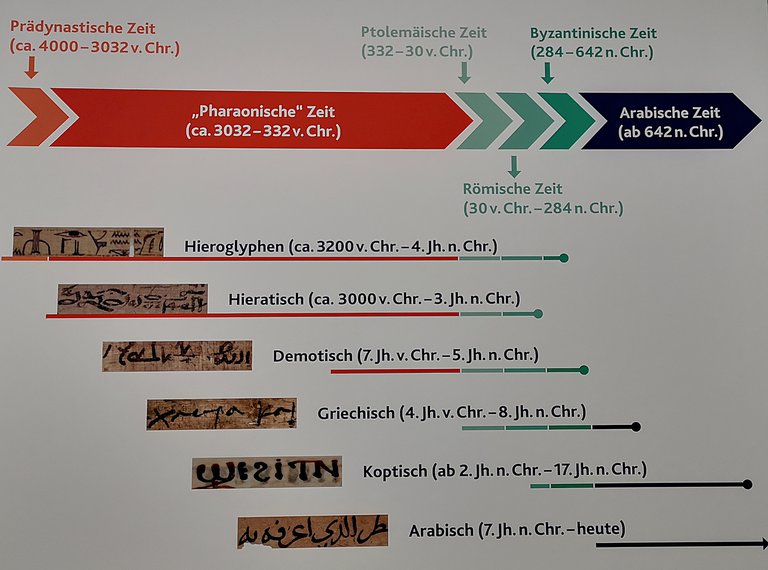
The overview shows all languages and scripts used in the changing history of Egypt since the beginning of the pharaonic era.
Die Übersicht zeigt alle Sprachen und Schriften, die in der wechselhaften Geschichte Ägyptens seit der pharaonischen Zeit verwendet wurden.
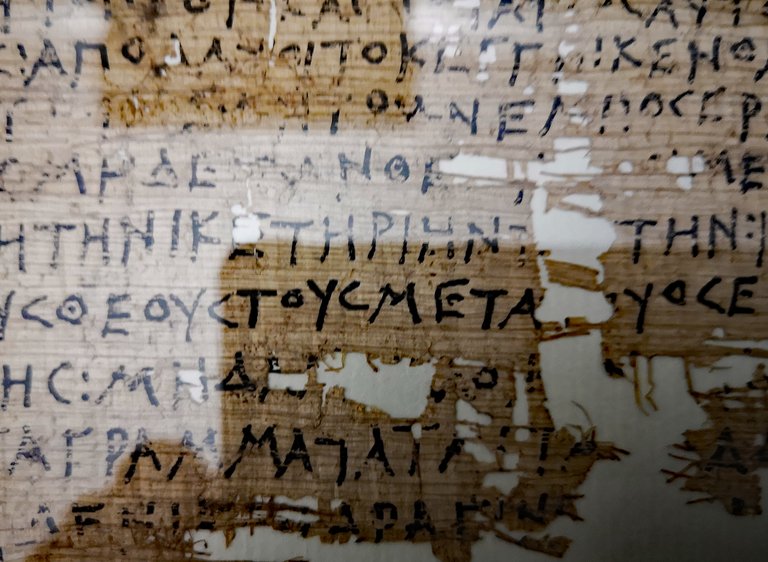
This papyrus ( Lament of Artemisia), from the 4th century BC, is one of the oldest preserved Greek manuscripts from Egypt.
Bei diesem Papyrus (Klage der Artemisia) aus dem 4. Jh. v. Chr. handelt es sich um eine der ältesten überlieferten griechischen Handschriften aus Ägypten.
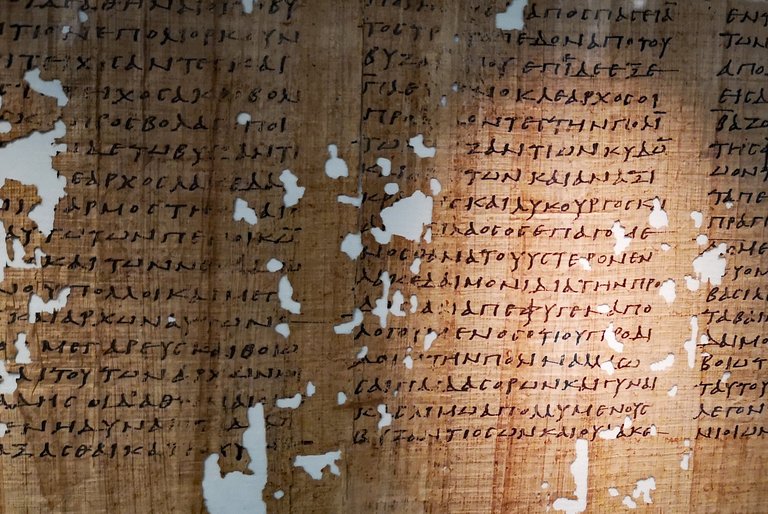
The document from the 1st century AD shows an excerpt from a collection of mathematical problems.
Das Schriftstück aus dem 1. Jh. n. Chr. zeigt einen Ausschnitt aus einer Sammlung mathematischer Aufgaben.
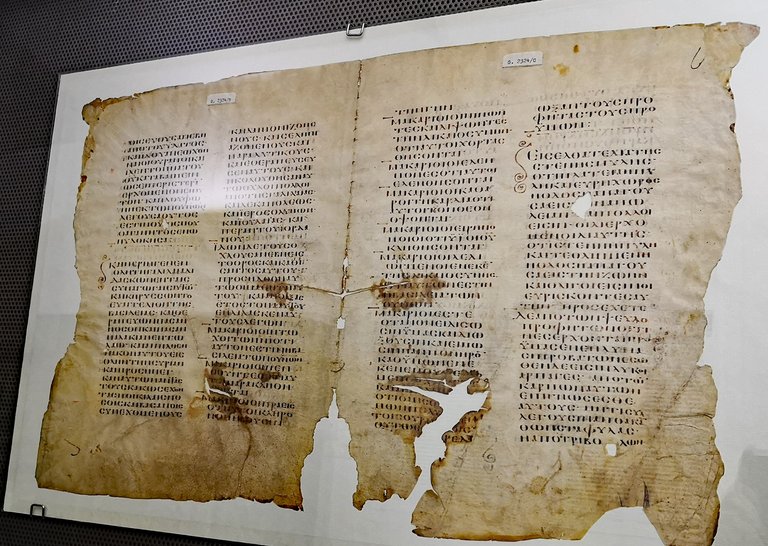
The excerpt from a Gospel Book (5th century AD) deals with passages from the Sermon on the Mount according to the Gospel of Matthew.
Der Ausschnitt eines Evangeliars (5. Jh. n. Chr.) enthält Abschnitte aus der Bergpredigt nach dem Evangelium nach Matthäus.
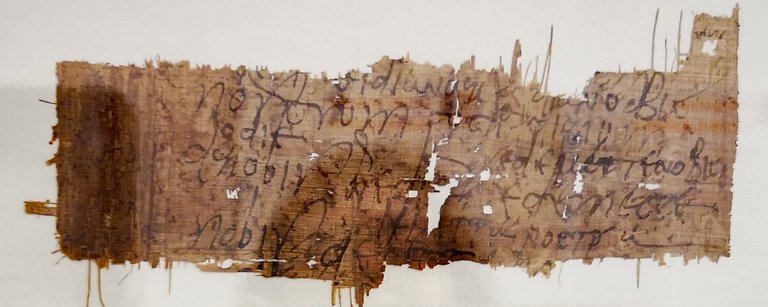
The papyrus fragment from the 6th century AD presents two verses of the Our Father in Latin translation.
Das Papyrusfragment aus dem 6. Jh. n. Chr. gibt zwei Verse des Vater-Unser in lateinischer Übersetzung wieder.
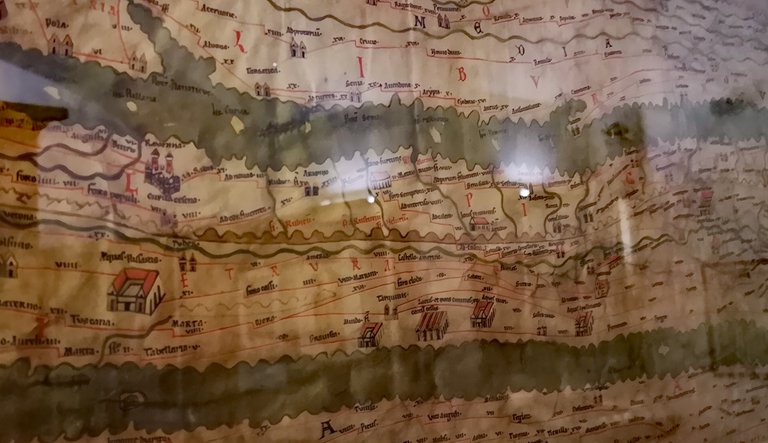
The Tabula Peutingeriana represents the road system in the late Roman Empire and visualizes geographical, political and cultural connections. The most important cities Rome, Constantinople and Antioch are marked by miniatures of their city gods.
Die Tabula Peutingeriana stellt das Straßennetz im spätrömischen Reich dar und visualisiert geographische, politische und kulturelle Zusammenhänge. Die wichtigsten Städte Rom, Konstantinopel und Antiochia sind durch Miniaturen ihrer Stadtgöttinen eingezeichnet.
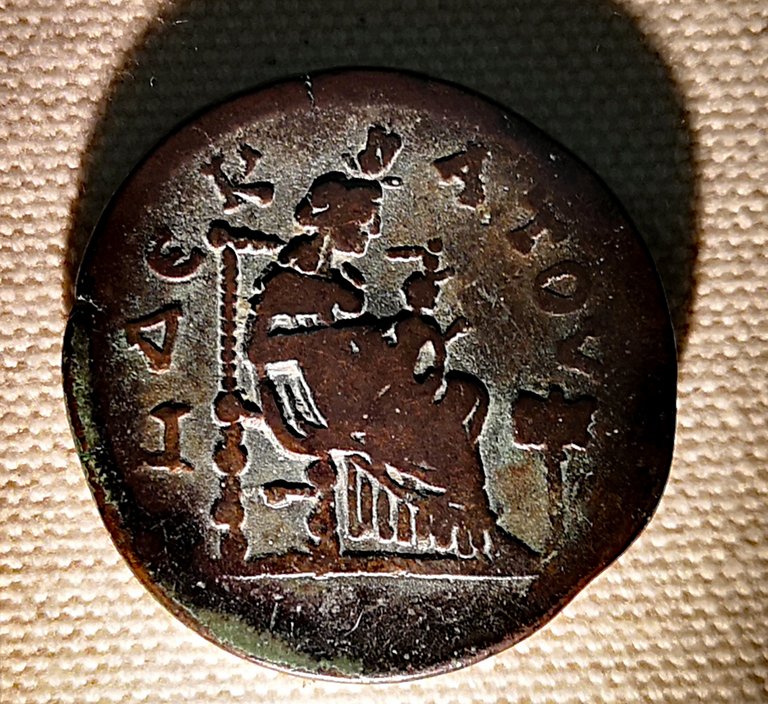
In Alexandria since the 2nd century B.C. depictions of the goddess Isis on coins were very popular. Here Isis is depicted with the Horus Boy.
Darstellungen der Göttin Isis auf Münzen waren vor allem in Alexandrien seit dem 2 Jh. v. Chr. beliebt. Hier ist Isis sitzend, mit dem Horusknaben auf ihrem Schoß, dargestellt.
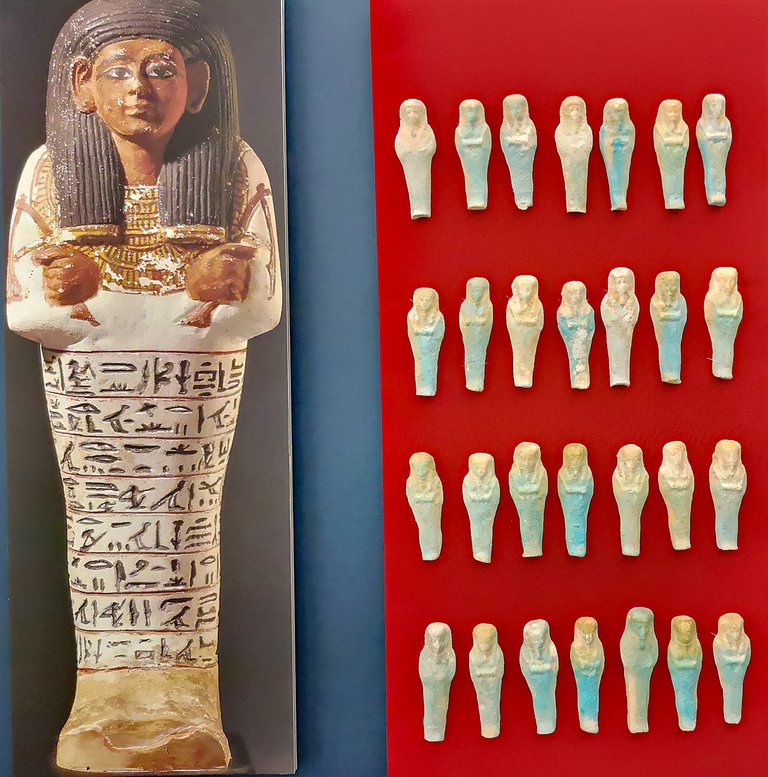
The mummy-shaped figurines, called Ushabti, were popular grave goods in ancient Egypt. Originally they served as a substitute body for the deceased in the afterlife. With the improved mummification techniques their meaning changed. They became now the representative of the deceased and took over all the work for him that had to be carried on in the hereafter.
Die mumienförmigen Figurinen, Uschebti genannt, waren beliebte Grabbeigaben im Alten Ägypten. Ursprünglich dienten sie als Ersatzkörper des Verstorbenen im Jenseits. Mit den verbesserten Mumifizierungstechniken änderte sich ihre Bedeutung. Sie wurden nun zum Stellvertreter des Verstorbenen und übernahmen für ihn alle Arbeiten, die im Jenseits weiter ausgeführt werden mussten.

Steles were used as tombstones. The representation usually followed a uniform type. The deceased rests on a lounger, beneath him a bundle of ears of corn, a pointed amphora and a table with the offerings for the funerary banquet are depicted.
Stelen dienten als Grabmal. Die Darstellungsweise folgte meist einem einheitlichen Typus. Der Verstorbene ruht auf einer Liege, unter ihm ist ein Ährenbündel, eine Spitzamorphe und ein Tisch mit den Opfergaben für das Totenmahl dargestellt.
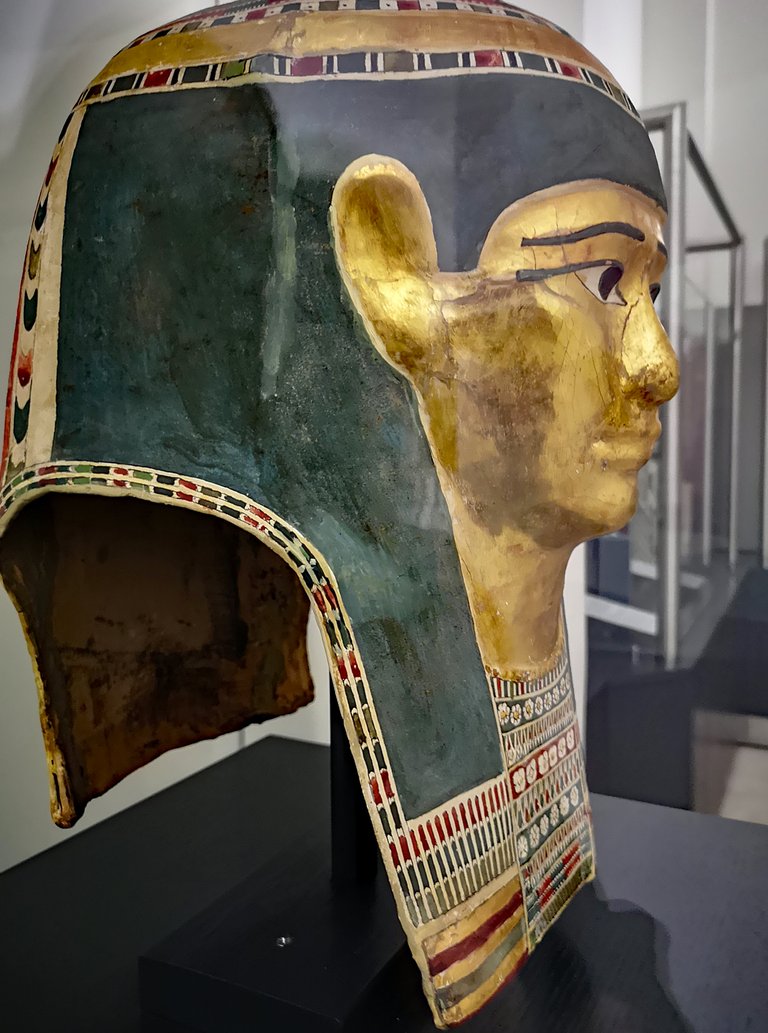
Around 300 exhibits are on display in the permanent exhibition. There are always special exhibitions, as recently on the subject of 'Wine in ancient Egypt'.
In der Dauerausstellung sind rund 300 Exponate ausgestellt. Es finden immer wieder Sonderausstellungen statt, wie zuletzt zum Thema "Wein im alten Ägypten".
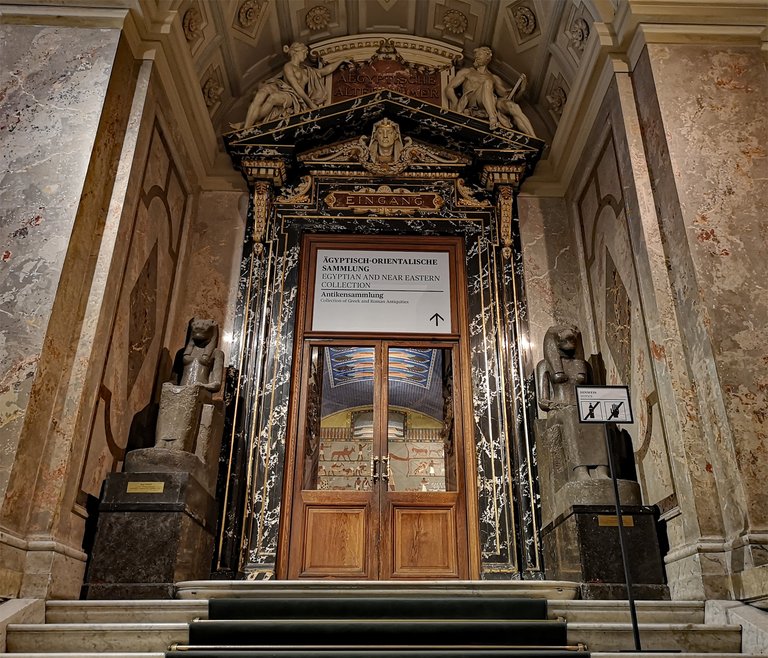
To all those who are interested in the cultural history of Ancient Egypt, I also recommend to visit the Egyptian-Oriental Collection in the Kunsthistorisches Museum in Vienna.
Allen, die an der Kulturgeschichte des Alten Ägypten interessiert sind, empfehle ich auch den Besuch der Ägyptisch-Orientalische Sammlung im Kunsthistorischen Museum in Wien.
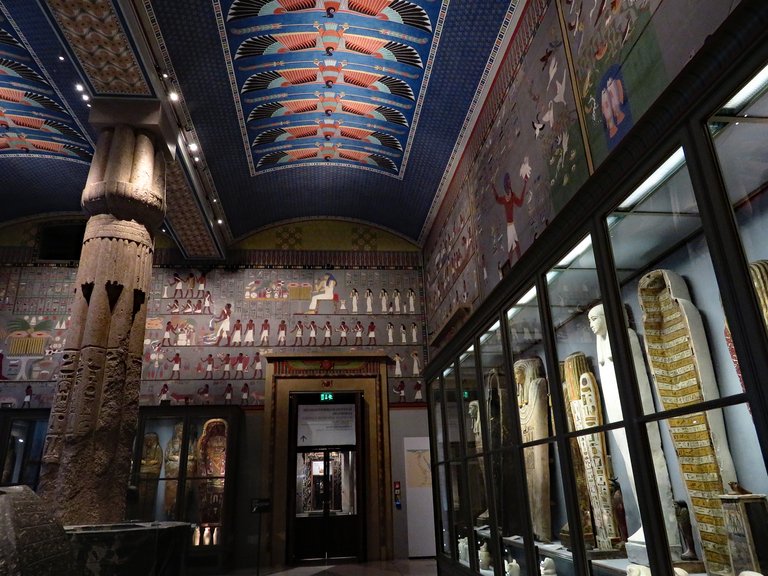
Dear Anna,
I just left a response to this under one of your replies. My enthusiasm kind of poured out. But here I'm back, and looking again. The stele, the Alexandrian coin, the shreds of papyrus painstakingly preserved--each of these speaks of the people who created them, who used them. I'm looking now at the Lament of Artemisia. You know I'm going to look that up :)
Thank you for bringing these treasures to us, for giving us an opportunity to connect with this part of human history.
Respectfully and Affectionately,
AG
Dear AG,
I've read your wonderful feedback, so thankful and happy about it!
I like that my article inspires you to do more research :) As far as I have found out, Artemisia curses her husband, who has given their daughter's mummy in pledge to a moneylender. This papyrus, like many others, can be viewed in the digital archive of the Austrian National Bank. Among the most interesting exhibits in the museum are Taruma's Book of the Dead or the Tabula Peutingeriana, that you mentioned already in a comment.
Have a nice sunday, full of sunshine and peace.
Affectionately,
Anna
Dear Anna,
Thank you very much for the reference to the Digital Archive! I have just visited. Glorious. The miracle of technology, and the grace of friends 🌼 🌼
Be safe. Be peaceful.
Affectionately,
AG
Dear AG,
After some relaxed days, completely without social media, I'm now back again.
I hope you are doing well. All the best, have a relaxed and peaceful weekend. 🌞
Affectionately,
Anna
Dear Anna,
I have been locked out of the internet since last Tuesday. Right now I’m in a parking lot using Starbucks WiFi on an iPad hard to type. Later or tomorrow I will get my son’s laptop and come back.
Haven’t read your blog or anything . Kind of hard here. Nopowere at all for a few days.
Thank you for you kind sentiments.
Be well
Affectionately,
Ag
Dear AG,
I' m so relieved to hear from you. I missed you already and was worried about you. Glad that only technical reasons kept you from being online. I hope that you are doing well otherwise.
I am looking forward to your "comeback".
Affectionately,
Anna
Dear Anna,
Thank you very much for your concern. I am back in the parking lot :), this time with my son's laptop. Much easier to type and surf. I am going to read your blog now. Looking forward to the treat.
Please stay well and peaceful.
Your friend from across land and sea,
Affectionately,
AG
Very interesting! Thanks for sharing!
Thanks for stopping by and leaving a comment :-)
Welcome!
I like looking at old manuscripts be it fragments, codex, or scrolls. All hand written that delve into the everyday lives of the writer or writers be it personal or business affairs. I've one time studied the art of Textual Criticism in examining old manuscripts and comparing text of the same documents that were centuries apart in time and geography. Studied first century Greek and Latin years ago but forgotten most of it by now, not enough practice. When I retire I may take that up again. Thanks for sharing!
I'm interested in old cultures and therefore like to visit museums. How often have I wished I could decipher historical texts and thus learn more about the everyday life of these peoples by original sources. Fortunately some texts are translated. By the way, you can also find the texts in the digital archive of the Austrian National Bank. It must be very informative to compare documents from different epochs and regions. Thanks for your comment!
Einfach klasse... und von mir 100 % Upvote und
LG Michael
!jeenger
!invest_vote
Vielen Dank Michael für das volle Programm :-)
Keep up the good work!Your contribution was curated manually by @mima2606
Dankeschön!
Danke. Ich schließe mich Michael an und erweitere auf Perfekt! Ich kann das nicht, aber so stelle ich mir einen guten Post vor. Ein dickes Dankeschön an dich zurück. !BEER und Prost
Herzlichen Dank lieber @jeenger für die netten Worte und die vielen indirekten Votes von dir!
View or trade
BEER.BEERHey @vieanna, here is a little bit of from @jeenger for you. Enjoy it!Learn how to earn FREE BEER each day by staking your
BEER.Dazu noch ein kleines !BEERDu wurdest als Member von @investinthefutur gevotet!
Vielen Dank!
View or trade
BEER.BEERHey @vieanna, here is a little bit of from @investinthefutur for you. Enjoy it!Learn how to earn FREE BEER each day by staking your
BEER.@mima2606 denkt du hast ein Vote durch @investinthefutur verdient!@mima2606 thinks you have earned a vote of @investinthefutur !
Danke!
Twitter account a_g_moore was registered to Hive account agmoore!